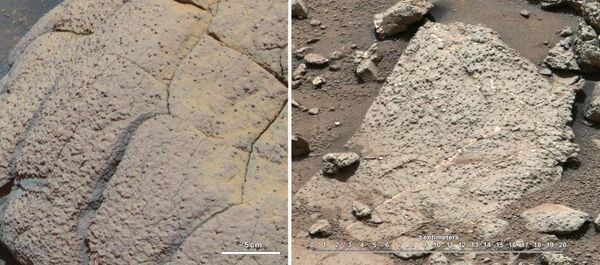WASHINGTON, March 12 (RIA Novosti) The first rock sample collected by NASA’s Curiosity rover shows ancient Mars could have been home to primitive life forms, agency officials announced Tuesday.
"A fundamental question for this mission is whether Mars could have supported a habitable environment. From what we know now, the answer is yes," said Michael Meyer, lead scientist for NASA's Mars Exploration Program, during a press conference Tuesday.
The announcement followed an analysis of rock samples taken last month when Curiosity used its robotic arm to drill into an ancient Martian stream bed near Gale Crater, an unexplored region where the robotic spacecraft first landed in August.
With the help of onboard tools, Curiosity found the samples were composed of chemical elements needed to sustain life, including sulfur, nitrogen, hydrogen, oxygen, phosphorous and carbons.
Scientists said the resulting data is the first “clear evidence” that primitive Mars could have supported life.
In previous missions in a different region of Mars, NASA found evidence that salty, acidic water was once present there, but at the time they said those conditions would make it challenging for organisms that live on Earth to survive.
This time around, Curiosity’s analysis of the new samples taken from Gale Crater shows clay minerals which indicate much fresher water that could have supported the sort of life forms that are typically found on Earth, they said Tuesday.
“We have found a habitable environment that is so benign and supportive of life, if you had been on Mars, the water would have been pure enough to drink,” said John Grotzinger, Curiosity’s project scientist.
The rover’s two-year mission is to search for evidence of past habitability and the presence of organic carbon compounds that could have played a role in the chemistry of life on the planet billions of years ago.
The $2.5-billion Curiosity rover was launched in November 2011 aboard an Atlas V rocket at Cape Canaveral Air Force Station.
NASA officials said the agency plans to follow up on Curiosity's findings with future Mars missions, including the $500-million Mars Atmosphere and Volatile EvolutioN (MAVEN) mission, which will be devoted entirely to understanding the Martian upper atmosphere and is scheduled to begin later this year.

